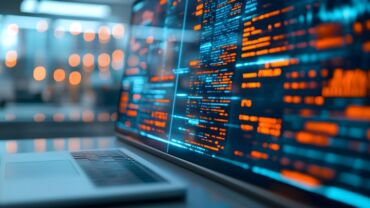A lot of the conversation around GenAI is focused on internal efficiencies and client deliverables, but as today’s legal professionals become more familiar with GenAI, it will inevitably have a major impact on training, recruiting, and people management as well
A major question about generative artificial intelligence (GenAI) is what this innovative technology will mean for the labor force. As discussed previously, the way to extract the most from GenAI tools is through the combination of humans and technology, rather than one or the other.
Ever since a March 2023 Goldman Sachs survey that estimated GenAI could perform nearly half of all legal tasks (a claim they have partially walked back), industry observers have been speculating on how the technology could impact legal people management — from staffing projects and boosting productivity, to upskilling the next generation of lawyers. We expect profound changes across all these areas in the short and long term.
Training is crucial to getting the most out of GenAI
As it currently stands, few legal organizations are training their employees about GenAI — just 18% of law firm respondents and 25% of corporate legal department respondents to the Thomson Reuters Institute’s Generative AI in Professional Services report from earlier this year said they had received training on GenAI.
However, research shows that professionals may experience a boost in productivity even with a brief primer on prompt engineering techniques, according to Boston Consulting Group (BCG). Further, the manner in which the training is delivered matters. A separate study by BCG measured the difference between workers simply being given GenAI tools and training materials from management, and those who were asked to go through an experimental co-creation process with peers. In the latter, a subset of managers and peers were selected to work with GenAI tools before their wider roll-out, learning how to adapt and integrate the tool into their work. Then, they passed their findings along to peers, with bi-weekly pulse checks to measure effectiveness.
The result is that the experimental teams had twice as many active GenAI users who used the tool twice as long as the other group. In addition, the experimental team reported 13% more joy over the rollout of GenAI implementation.
For legal specifically, this means a new way of introducing technology to people, thus requiring a new way of thinking about training. One law firm respondent to the Thomson Reuters recent Future of Professionals Report noted that the most important action their firm could take for the future is to “do more mandatory AI training. Especially with associate billables down but the work is high, we need to be strategizing how we can best make sure the work gets done.”
In some cases, this could even mean that AI itself is the trainer. Increasingly, tools such as Microsoft’s Copilot feature suggest prompts, teaching users how to engage with the technology in a way that achieves optimal results. The ultimate goal is to introduce GenAI concepts more naturally, in a way that attorneys want to work.
Long-term impact on professionals
For those law firms and corporate legal departments that are engaging GenAI, the goal should not just be short-term efficiency. Particularly as GenAI technology becomes more powerful and legal professionals become accustomed to working with it naturally, these legal organizations should already be planning for how GenAI will impact their long-term people management in multiple ways.
First of all, there is the task of training the next generation of legal professionals and leaders. Already, many law students are utilizing GenAI tools within their own areas of study — and according to a late-2023 study from the University of Minnesota law school, students are seeing large and consistent increases in speed and efficiency due to GenAI. It’s perhaps no surprise then that according to the Future of Professionals Report, more Gen-Z legal professionals believe GenAI will have a transformational or high impact on the practice of law than do their elder counterparts.
It is reasonable to expect that these new patterns of working will continue when today’s law students enter the working world, and eventually become leaders of organizations themselves. As one law firm respondent to Future of Professionals noted, that as a result of these work trends, law firms should be actively courting “additional staff, specifically of the next/younger generations, which will help to drive technology changes.”
Indeed, with so many future lawyers using these tools, it’s also reasonable to expect that they would actively seek out those organizations that make use of GenAI, casting the technology as a potential recruiting tool. Yet just 18% of law firms and 19% of corporate legal departments are currently considering GenAI skills during the interview and recruitment process, according to our Generative AI in Professional Services report.
However, there may be a different expectation from workers, as according to the Future of Professionals Report, which showed that almost half (48%) of Millennial-age legal professionals and 54% of Gen-Z legal professionals believe AI will contribute to a greater variety and accessibility of career paths over the next five years.
This will be of particular interest to Gen-Z and younger legal professionals because of the work they’ll be asked to do in the future. As GenAI automates tasks that used to be the realm of first and second-year associates — such as first-pass research, initial document drafting, discovery, proofreading, and more manual tasks — these professionals will need to find other work within their organization. This likely means upskilling themselves in areas of case and client strategy more quickly than ever before; and crucially, law firm and corporate legal training processes will need to align with this new need so that junior lawyers can contribute valuably as quickly as possible. Indeed, there is a role for GenAI to play with virtual training environments and the ability to deliver feedback on drafts and other work, but once again, it is on firms and legal departments to institute these changes.
For more senior lawyers, there may be a need to change the nature of their practices as well, as the ability to quickly become well-versed in a variety of different specialties means that lawyers may be expected to cover broader practice areas. As GenAI-enabled tasks such as research become quicker and more generally available to all attorneys, and even domain expertise, while still important, becomes more easily learned, the key differentiators among attorneys will be case strategy, relationships with clients, and critical thinking — areas more easily portable across the firm.
Future planning begins now
There is a lot to be said for how GenAI will impact the future structure of law firms and corporate legal departments, but on an individual level, GenAI already is beginning to have a major impact on legal professionals themselves — changing how they become more skilled, and how legal organizations will approach the professional of the future.
It’s not hard to conceive of a near future in which every incoming worker to a firm or legal department has familiarity with GenAI tools, and largely expects the same from their new employer. This tech-familiarity thus becomes crucial not only from an internal efficiency and client development standpoint, but also from a talent and people management perspective.
To get there, integrating GenAI concepts into training, recruiting, and people planning must begin now.
You can find more on Generative AI in the Legal Industry from the Thomson Reuters strategy team and the Thomson Reuters Institute, here.







